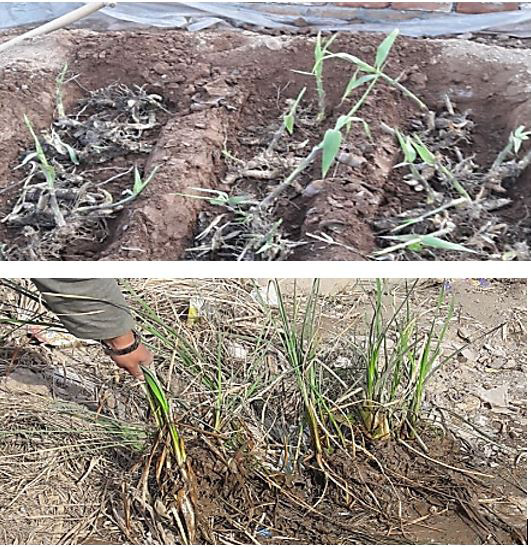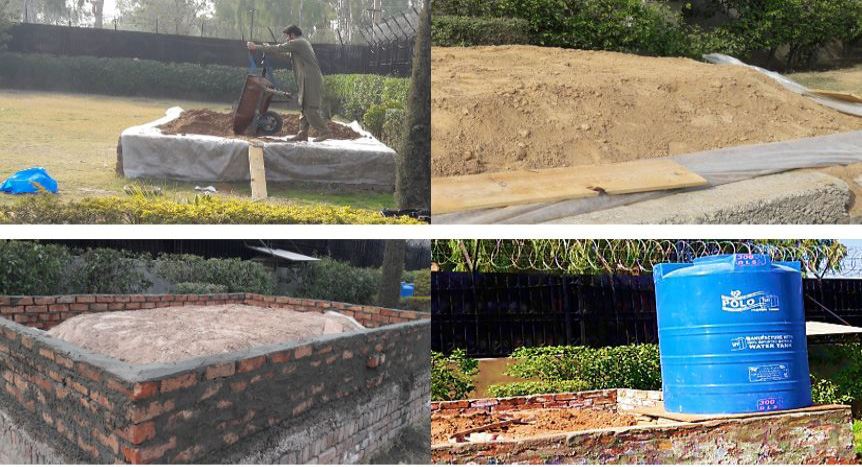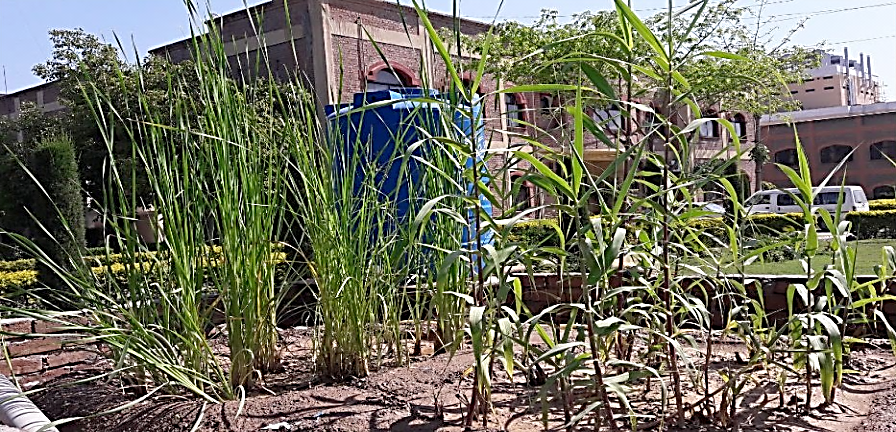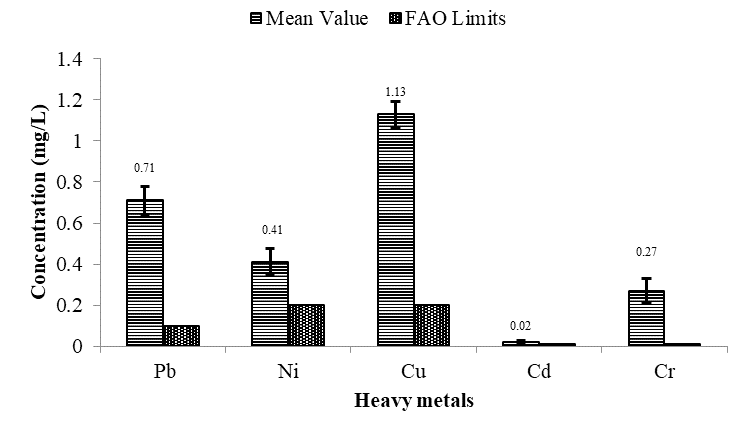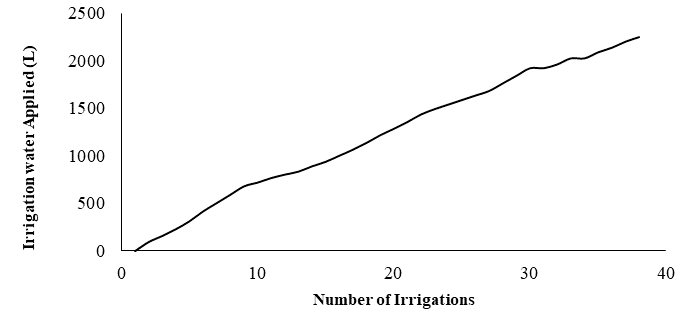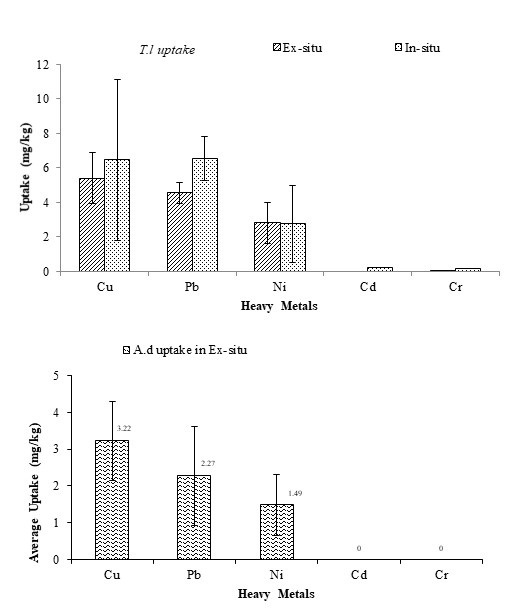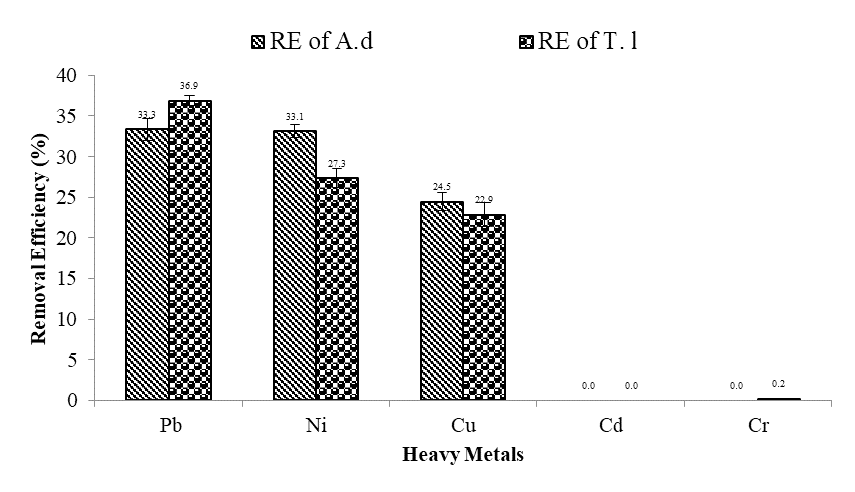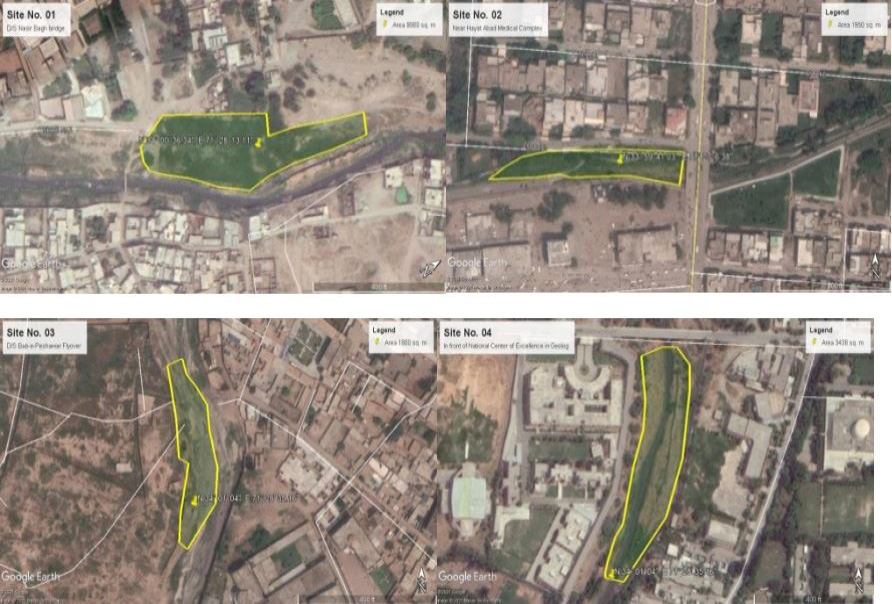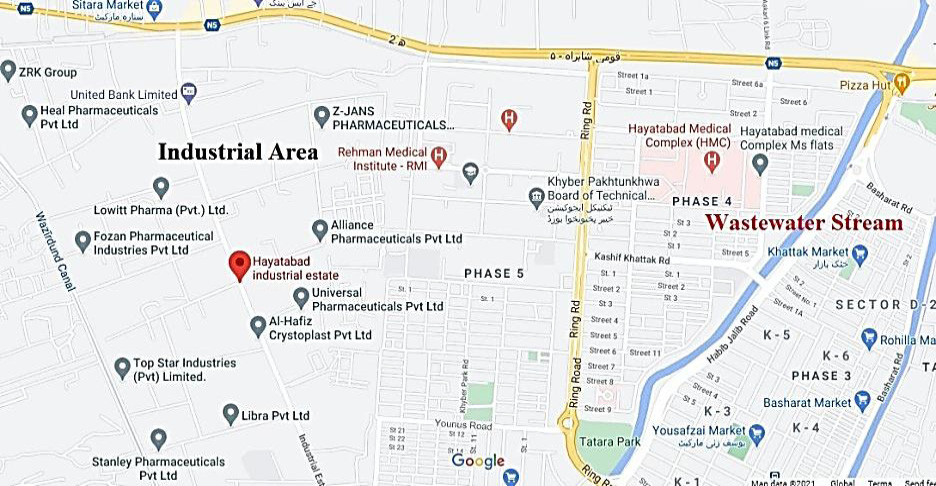Phytoremediation of Heavy Metals from Irrigation Water – Case Study of Hayatabad Peshawar
Phytoremediation of Heavy Metals from Irrigation Water – Case Study of Hayatabad Peshawar
Noor Muhammad Khan1,2, Tariq Mahmood Khalil1,3*, Rashid Rehan2 and Iftikhar Zeb4
Planation at the research site.
Lab plantation, construction of planter and soil bed preparation. Preventing seepage losses using plastic sheet. Masonry work around the perimeter to isolate the site and maintain a constant water depth during plants growth.
Plants at their full growth stage.
Samples of leaves, stem, and roots samples for biomass analysis.
Heavy metals concentration in wastewater.
Applied irrigation water for plantation period.
Comparison of plants performance in ex-situ and in-situ conditions.
Comparison of removal efficiency for Arundo donax and Typha latifolia.
Potential phytoremediation sites in the right of way of drain.
Estimated heavy metals uptake by plantation.
Study area map.




